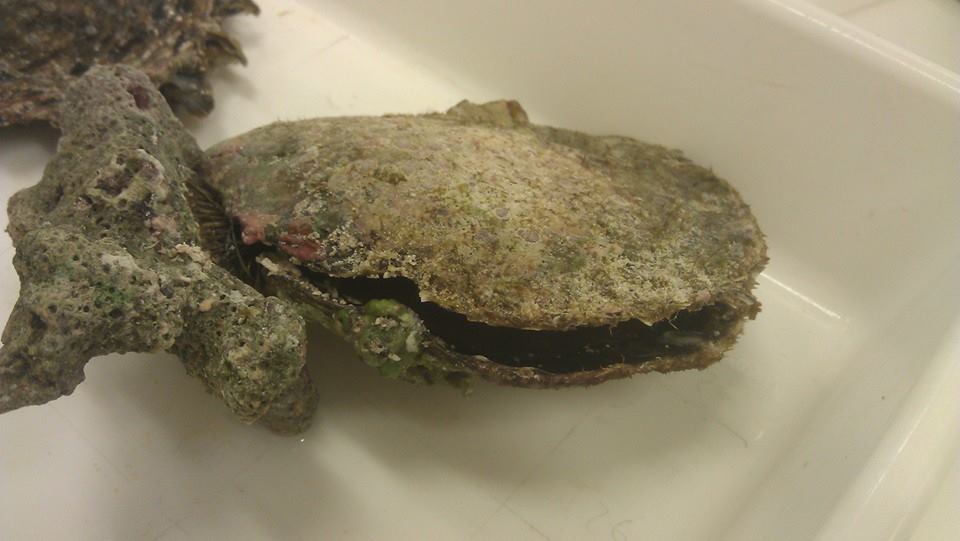Ecology
C. biunguiculatus are found within the Black-Lipped Pearl Oyster, Pinctada margaritifera. The species is, therefore, found in the same habitats as the oysters. Pinctada margaritifera are generally found attached to rocks or coral on the sandy bottom of reef crests. For example, the oysters used in experimentation in this report were gathered from the Southern reef crest of Heron Island.
The species itself, meanwhile, can generally be found in the mantle cavity of the oysters nestled closely to the adductor muscle. Presumably, however, C. biunguiculatus are free to move throughout the entire mantle cavity of the oysters.

Image 6: An example of Pinctada Margaritifera. This image shows the oyster attached to a piece of coral rubble. In its natural environment, this piece of rubble would be significantly larger of fixed to these a bed. C. biunguiculatus can be found within the mantle cavity of these bivalves.

Image 7: The inside of a P. margaritifera. The black arrow shows the position of the adductor muscle, which is the area usually inhabited by C. biunguiculatus.
|